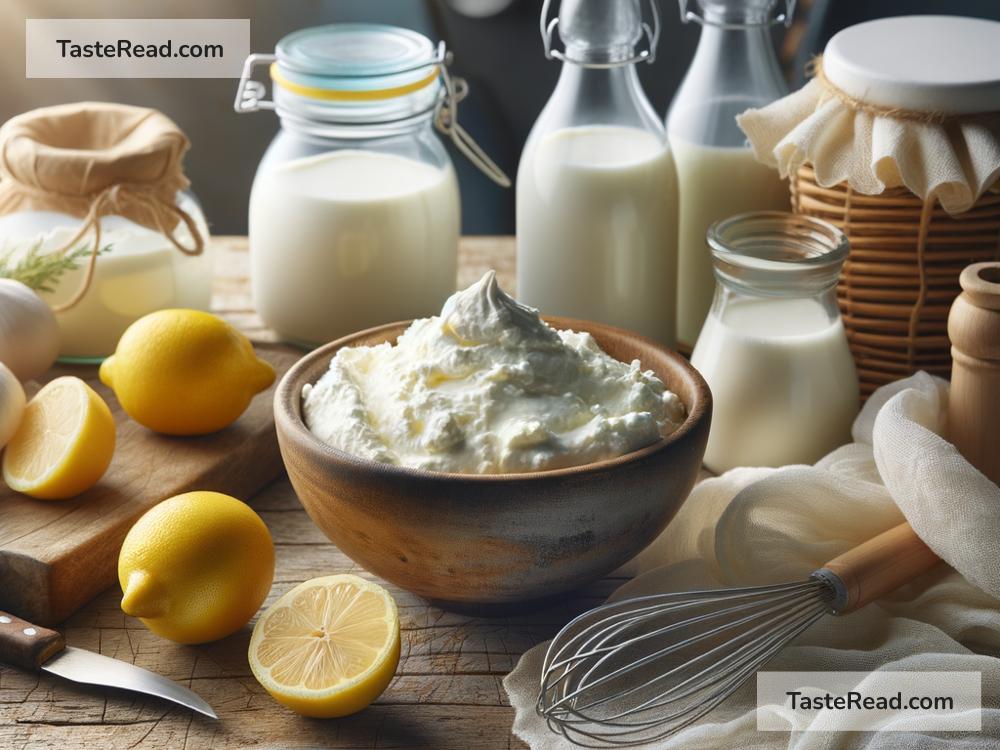How to Prepare Homemade Ricotta Cheese: A Simple Guide
Have you ever wondered how to make ricotta cheese at home? It’s easier than you might think, and you only need a few basic ingredients! Homemade ricotta cheese is fresher, creamier, and tastier than store-bought versions. Plus, it’s a fun cooking project that can elevate your dishes, such as lasagna, ravioli, desserts, or even simple toast spreads.
In this blog, we’ll take you step by step through the process of making ricotta cheese in your own kitchen. Whether you’re an experienced cook or a beginner, this guide will ensure you get delicious results. And best of all—it only takes about 30 minutes!
What Is Ricotta Cheese?
Before we dive in, let’s learn a little about ricotta cheese. Ricotta is a soft, creamy cheese that’s Italian in origin. Its name comes from the Latin word recooked because traditionally, ricotta is made from whey, a by-product of cheese-making.
Modern homemade ricotta uses whole milk or a combination of milk and cream, since whey is harder to obtain outside of professional cheese-making facilities. The result is a mild, slightly sweet cheese that can be used in both savory and sweet recipes.
Ingredients You’ll Need
To make ricotta cheese at home, you only need four simple ingredients:
- Whole milk – Use fresh, whole milk for the best results. Avoid ultra-pasteurized milk as it doesn’t curdle well.
- Heavy cream – Adds richness to the cheese.
- Acid (lemon juice or white vinegar) – Helps curdle the milk and separate the curds from the whey. Lemon juice adds a slightly citrusy flavor, while vinegar has a more neutral taste.
- Salt – Boosts flavor.
You’ll also need a few kitchen tools:
– A large pot
– A thermometer (optional but helpful)
– A slotted spoon or ladle
– Cheesecloth or fine sieve
– A bowl for catching the whey
Step-by-Step Instructions
Now that we have our ingredients and tools ready, let’s get started!
Step 1: Heat the Milk and Cream
Pour 4 cups of whole milk and 1 cup of heavy cream into a large pot. Place the pot over medium heat and gently warm the mixture. Stir occasionally to prevent the milk from scorching.
Using a thermometer, heat the milk to about 180–200°F (82–93°C). If you don’t have a thermometer, look for small bubbles forming around the edges of the pot, but avoid letting the milk boil.
Step 2: Add the Acid
Once the milk is hot, remove the pot from the heat. Add 3 tablespoons of lemon juice or white vinegar to the pot. Stir gently for a few seconds to mix the acid into the milk.
You’ll quickly notice the mixture begin to curdle. Small white curds will separate from the watery liquid, which is called whey. If you don’t see curds forming, you can add another tablespoon of acid.
Step 3: Let It Rest
Cover the pot and let it sit undisturbed for about 5–10 minutes. During this time, the curds will continue to form, and the whey will settle.
Step 4: Strain the Curds
Place a cheesecloth-lined sieve or fine mesh strainer over a large bowl. Carefully ladle the curds and whey into the sieve. Allow the liquid to drain for about 10–20 minutes, depending on your desired texture. For softer ricotta, drain for less time; for firmer cheese, drain longer.
If you don’t have cheesecloth, a clean kitchen towel or sturdy paper towels will work as a substitute.
Step 5: Add Salt (and Optional Seasonings)
Once the ricotta is drained to your liking, transfer it to a bowl. Stir in about ¼ teaspoon of salt (or more, based on taste). If you’re feeling adventurous, you can add other seasonings like black pepper, herbs, or a drizzle of olive oil.
Step 6: Store or Serve
Your homemade ricotta is ready to use! If you’re not serving it immediately, store it in an airtight container in the refrigerator. Ricotta stays fresh for up to 3–4 days.
Tips for Success
- Don’t throw away the whey! The leftover liquid is rich in protein and nutrients. You can use it in smoothies, soups, bread recipes, or even as a garden fertilizer.
- Experiment with flavors. Add honey, cinnamon, or vanilla to create a sweet ricotta for desserts.
- Use quality ingredients. Fresh milk and cream make a huge difference in flavor and texture.
Why Make Ricotta at Home?
Homemade ricotta cheese is not only delicious but also rewarding to prepare. You control what goes into your cheese—no preservatives or artificial ingredients. It’s also cost-effective, especially when compared to specialty cheeses from the store.
Plus, making ricotta is a great way to impress your friends and family. Imagine serving pasta or desserts with cheese you made yourself—it’s sure to be a conversation starter!
Conclusion
Preparing ricotta cheese at home is quick, simple, and incredibly satisfying. With just four basic ingredients and a little patience, you can enjoy a creamy, flavorful cheese that’s perfect for countless recipes. Whether you’re making a lasagna for dinner or spreading it on toast for breakfast, homemade ricotta will add a special touch to your dishes.
So, why not give it a try this weekend? Once you taste the difference, you’ll wonder why you didn’t start making ricotta at home sooner. Happy cooking!


